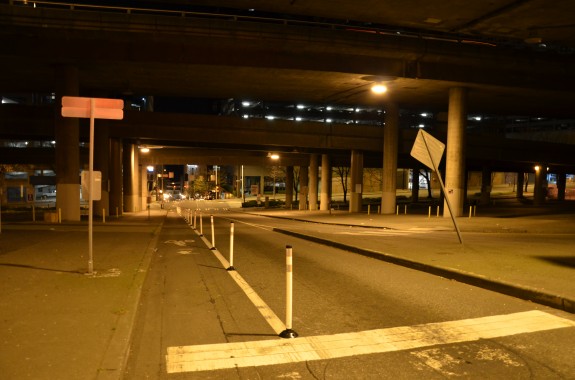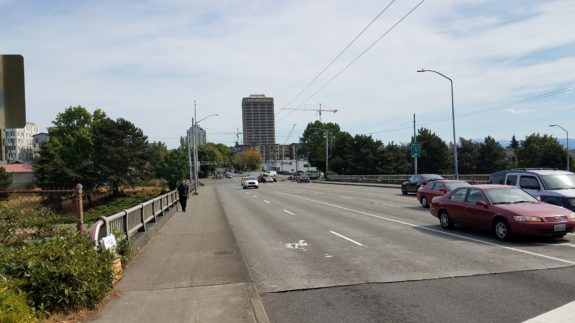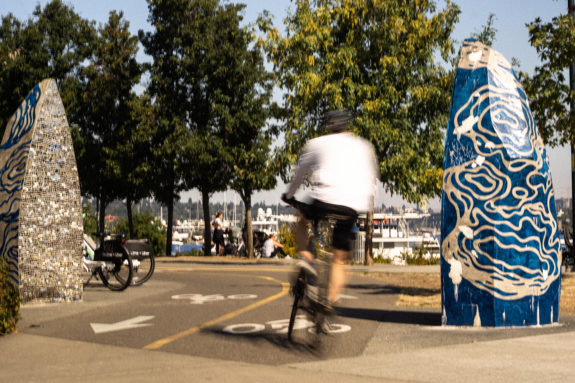Timelapse from Saturday's #cranksgivingSEA pic.twitter.com/BvibRuI9K2
— Gary A. Fujioka, Sr. (@garyfujiokasr) November 21, 2022
Seattle’s 13th Annual Cranksgiving was one for the record books. The food drive bike ride’s 199 participants (180 riders and 19 volunteers) bought and hauled 3,308 pounds of food and essentials to the U District, Rainier Valley and Byrd Barr Place Food Banks. This officially topped the previous record set in 2019.
After two years of dramatically-scaled-back events due to the pandemic, I missed you all so much. The Cranksgiving crew is so special. Everyone is just beaming with positivity and love for the community. I am still glowing just from being around you all.
The 2022 event may have been the 13th Cranksgiving Seattle Bike Blog has organized, but it was also a new beginning as we partnered with Cascade Bicycle Club’s Pedaling Relief Project to take it to the next level. 2019’s 190 riders was at the limits of what I could feasibly handle as a sole organizer working on a shoestring budget. Swift Industries had long been our closest partner, hosting the afterparty in their Pioneer Square showroom for many years. But their showroom is no longer there (you can now check out their wares inside Peloton Cafe), and our crowd was already bursting at the seams. To allow the event to grow, we needed more careful organization and a coordinated crew of volunteers. PRP, led by friend of the blog Maxwell Burton, did that and more.
Big thanks to Burton and Cascade Ride and Events Program Manager Rishan Mohideen for working with me behind the scenes to make this year such a success. Central Cinema graciously waived venue fees for the afterparty and were very patient with all our last-minute changes. Thanks also to Bike Works, who brought their BikeMobile to the start line to help with pre-ride mechanical issues and secured donated gift cards from REI to help some riders offset their purchases. Thanks also to Eugene Pak for presenting about the upcoming film Riding Han.
These donations will be a big help, but your local food banks need all the help they can get right now. As Josh Cohen reported for Crosscut this week, food banks are facing a serious squeeze as pandemic-related funds dry up and inflation makes groceries more expensive. The Ballard Food Bank, for example, expects to spend about $1.5 million on groceries this year compared to $300,000 a year ago. So please consider monetary donations to support these organizations doing important and direct community support work. You can also volunteer your time with the food banks directly or by joining a (very fun) Seattle Pedaling Relief Project team to help with food rescue and delivery work.
And of course, thank you to all the riders. Here are some scenes from #CranksgivingSEA. If you have more that you want to share, either email [email protected] or post links in the comments below: (more…)











